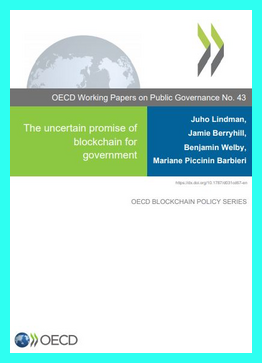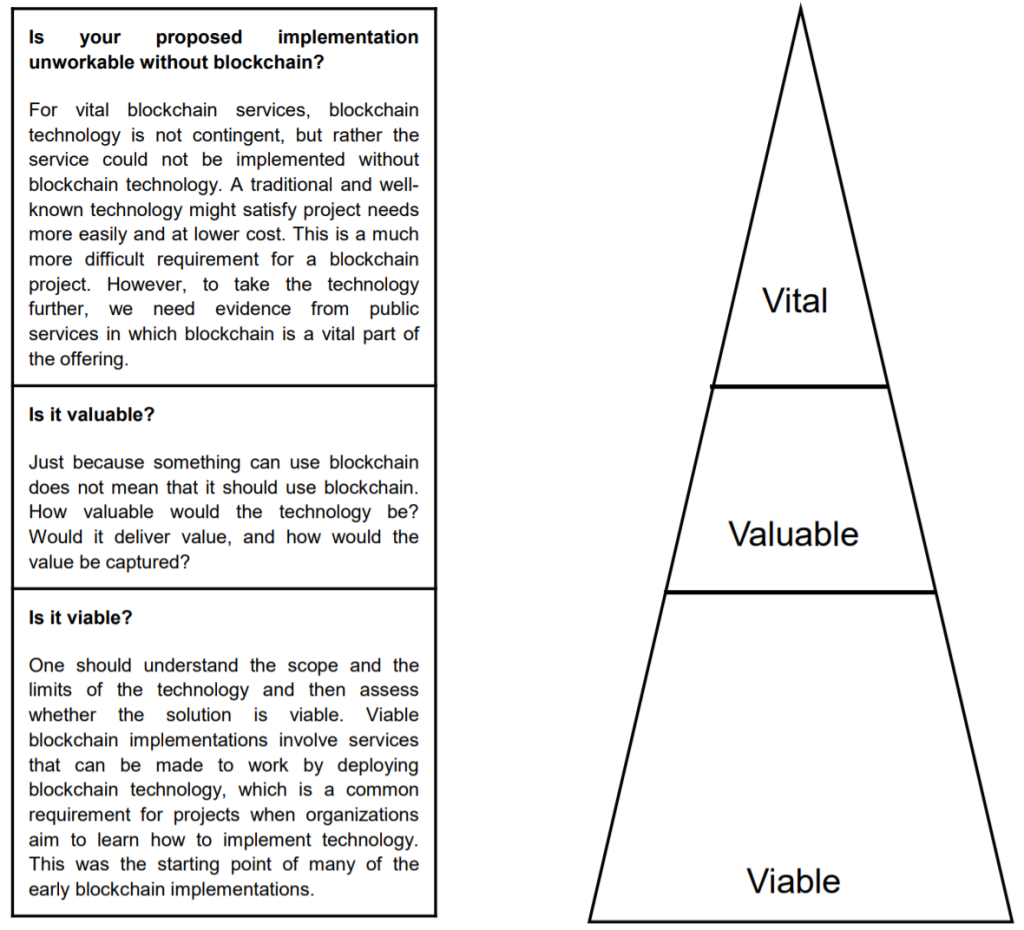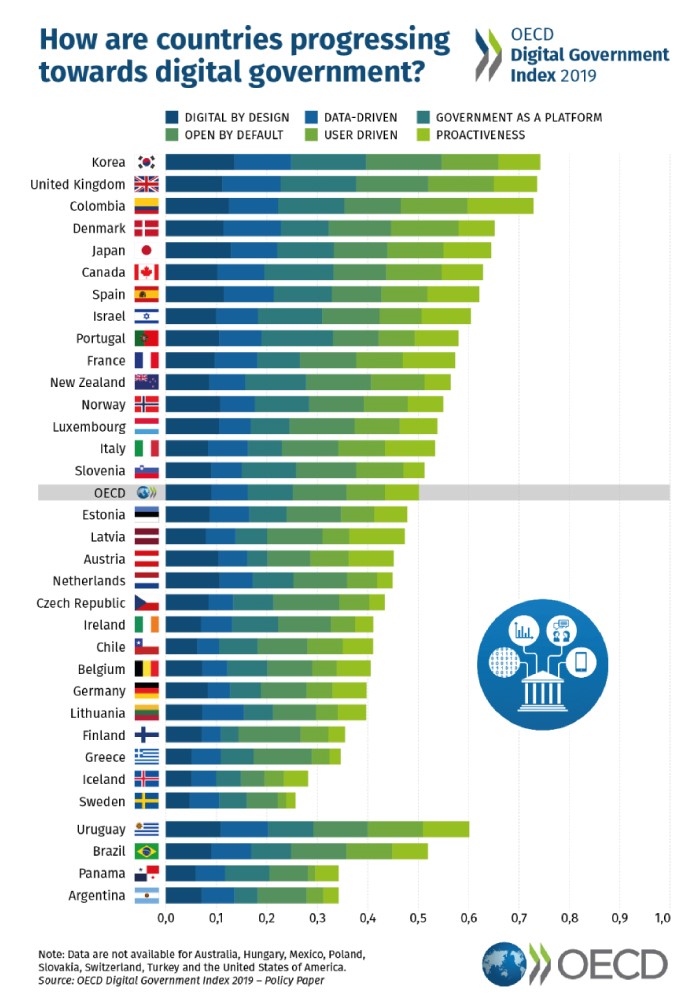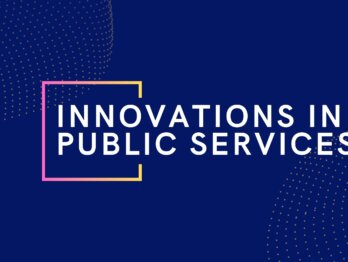The Uncertain Promise of Blockchain for Government

Since late 2019, we have been working to answer the question “why hasn’t blockchain, and its underlying distributed ledger technology (DLT), made a bigger impact in the public sector?”. It has been over two years since OPSI published the report Blockchains Unchained: Blockchain Technology and its Use in the Public Sector, and over a year since the OECD Digital Government and Data Unit published the report State of the Art in the Use of Emerging Technologies in the Public Sector. These reports sought to help public servants understand what blockchain is (and isn’t), the implications it could have on government, and the opportunities and challenges governments may face as a result. The reports surfaced hundreds of government blockchain initiatives in dozens of countries and found that there was tremendous hype and promise for the use of blockchain for driving innovation and digital transformation in the public sector. However, since then, we have not really seen breakthrough innovations in government, or a significant number of projects that have moved beyond proofs of concept or small pilots. At the same time, work done through the OECD’s Global Blockchain Policy Centre has helped to demonstrate as a series of proven private sector use cases, often linked to cryptocurrencies, fintech and other financial services. This leads us to wonder, why has the private sector managed to make significant progress in leveraging blockchain, while efforts driven by governments have often stalled out?
New report discusses the uncertain promise of blockchain
To help answer this question, OPSI and the Digital Government and Data unit have collaborated with blockchain expert Juho Lindman (associate professor of informatics at the University of Gothenburg, Sweden), who was identified through an open call, to review the latest research in the area, and to identify and analyse public sector experiences on successful and unsuccessful blockchain projects. The findings of this work were presented in the new report The Uncertain Promise of Blockchain for Government during the 2020 OECD Global Blockchain Policy Forum. The report provides early and observational evidence on beliefs, characteristics and practices related to blockchain projects and the organisations that seek to implement them, with a focus on factors that lead to success or non-success.

The report aims to cut through the hype around blockchain, equip public sector decision-makers with a better understanding of the current blockchain landscape, help officials take a critical look at potential use cases, and to assist them in their thinking as they consider and, if appropriate, initiate, manage, and de-risk blockchain technology projects. In particular, this report:
Helps public servants determine if a blockchain solution is viable, valuable, and vital to address a problem
The report provides an overview of the current situation and an overall framework to evaluate the benefits of blockchain services for a particular need using the three Vs (viable, valuable, and vital) checklist as applied to blockchain and associated use cases. In general, blockchain should be pursued when it meets all three criteria.

Source: OECD, as adapted from a framework conceived by Deloitte.
Identifies and addresses top myths related to public sector blockchain
Technological breakthroughs are often — some would claim always — accompanied by unwarranted expectations and hype. This is not necessarily a bad thing: imagining the potential of technologies helps to make the possible use cases more concrete. However, public discussion around blockchain is still often full of off-base expectations about the technology and its potential. Research conducted for this report has shed light on several recurring myths related to public sector blockchain. Each of these myths is discussed in the report.
| Myth | Response |
|---|---|
| (Public) blockchains are disrupting the public sector all around the world. | So far, blockchain-related public services that have actual users are very rare. |
| It is impossible to build successful blockchain applications for the public sector. | There is no obvious reason the public sector could not develop, implement, and use blockchain solutions. |
| There is one obvious way to apply blockchain technology in the public sector. | Blockchain could bring benefits to a number of areas. |
| If you build it, users will come. | Users need to be presented with the benefits of the services. |
| If it is blockchain, it needs to be big and disruptive. | Small, pragmatic, and evolutive blockchain implementations are just as valuable. |
| Nobody knows how blockchains are implemented. | Technology and corresponding skills have developed in both the public and private sectors in recent years, and there is greater access to external skills (e.g., through partnerships or procurement) |
| Blockchain is a generic technological solution, similar to AI. | Uses for blockchain technology are much more limited in their scope. |
| We are not tech people and should not care about detailed design decisions, such as blockchain. | Decoupling design from the implementation does not seem warranted. |
| Results of blockchain projects contribute to blockchain knowledge. | Experimentation is important, but those lessons and takeaways should be shared. They often are not. |
| Users care that services are based on blockchain. | All other things being equal (e.g., equitable decisions, privacy of personal information, etc.), service end users do not generally care which technological infrastructure provides them with a service. |
Surfaces factors that contribute to success and failure with government blockchain projects
In reviewing successful and unsuccessful public sector blockchain projects, and by interviewing the teams behind them, we have documented early observations on factors that can lead to success and failure. Factors that contribute to success and non-success are discussed in the report, and consist of:
| Factor | Contributes to: | Description |
|---|---|---|
| Clear value proposal | Success | The project must address a clear, specific business goal. |
| Appropriate technology | Success | The project must use appropriate (fit-for-purpose) technology. |
| Stakeholder management | Success | The project must identify and manage relevant stakeholders. |
| User focus | Success | The project must engage end users with the service’s design. |
| Experimentation | Success | The project must address problems encountered during implementation and pursue unforeseen opportunities. |
| Disruptiveness | Non-success/failure | Disruptive projects are generally more complex and difficult to implement |
| Limited scalability | Non-success/failure | The deployment of projects with limited scalability may be impossible or not worth the effort; however, they may provide learning opportunities. |
| Legal uncertainty | Non-success/failure | Lack of clarity regarding the legal or regulative side hinders service deployment. |
Assists government officials in understanding whether their organisation and teams have the digital maturity levels needed to explore blockchain
Blockchain is an advanced topic that requires a certain level of organisational and team maturity. The report considers blockchain through the lens of the new OECD Digital Government Policy Framework (DGPF), a policy instrument to help governments sustain high levels of digital maturity, and the Digital Government Index, the measurement instrument of digital maturity based on six dimensions.

For assessing the suitability and implementation of blockchain in the public sector, the report considers the level of maturity in organisations and teams through the six dimensions of the DGPF framework: digital by design, data-driven public sector, government as a platform, open by default, user-driven and proactiveness.
Provides a series of case studies of blockchain on the frontlines
The report walks through a number of case studies of public sector blockchain projects, including those that have gained a real user base, which is the hallmark for blockchain success used in this report, as well as those for which blockchain did not fully meet expectations. In particular, the report covers:
- Groningen municipality (Netherlands) and Stadjerspas vouchers: Success despite blockchain.
- BlockCerts (Malta) academic certification.
- Lantmäteriet (Sweden) and property transactions: Suspended as planned, but running into legal hurdles.
- Tel Aviv (Israel): Local currency gets pulled amid regulatory concerns.
- Voatz (US): Blockchain-based complementary distance voting.
- Estonian Information Systems Authority (RIA) and KSI Blockchain (Estonia): Private blockchain-backed government records.
- Government of Karnataka (India): Post education scholarship certification.
The report also provides a longer list of additional blockchain use case that have gained users, which may warrant further analysis.
Experts provide their insights at the Global Blockchain Policy Forum
The Uncertain Promise of Blockchain for Government report was launched at a dedicated session of the OECD Global Blockchain Policy Forum 2020, the leading international event focused on the policy implications of this technology and its applications, led by the OECD’s Blockchain Policy Centre. Moderated by report co-author Benjamin Welby from the OECD Digital Government team, the session brought together Siim Sikkut (Government CIO, Estonia) and Ann Cathrin Riedel (Chairwoman of LOAD e.V. – Association for liberal Internet Policy) to discuss why they think the promise of blockchain for government is uncertain and where they think the technology is headed.
The full session can be viewed in the video above, but some key take-aways include:
- Ann Cathrin thinks there are potentially useful government blockchain use cases, but that it must focus on the end users. She cautioned the audience to look past the hype, and the need for extra scrutiny and serious discussion around blockchain for public services and government, as this is totally different than its use in start-ups.
- Siim explained that DLT is used for records management data integrity in the Estonian government, and that it’s been successful because it uses it for granular and concrete functions. It is one tool among other tools and is useful for certain purposes, where other tools may be more useful for other purposes. It’s still early to know the best purposes, so it’s important to allow experimentation. Experimentation helps to bring about certainty. Siim also flagged that blockchain is still a very young technology, and that we may have cycles of learning about it. AI, for example, has been studies for decades and has faced a number of “AI winters”, where people turned away from the technology before discovering new ways it can add value. Experimentation is critical for uncovering this, and it requires time, energy, funding, and staff to do well.
- Ann Cathrin discussed that increased skills and understanding of blockchain in government could help make things more certain. This helps to address the challenge of governments seeking to use blockchain for blockchain’s sake, rather than when appropriate based on an understanding of the problem at hand and the needs of those involved. It’s also important for governments to actively engage with and listen to experts who can provide perspective on different aspects of the tech. Ann Cathrin cautioned the audience to not seek disruptiveness, which is well-aligned with the new report, which indicates that a high level of potential disruptiveness can contribute to non-success/failure in blockchain projects. Disruptiveness can be “destructive”, which is not what we need in the public sector, said Ann Cathrin.
- Both panellists spoke on the topic of trust. While blockchains are often hyped as being a being able to create trust, Ann Cathrin and Siim believed this to not be appropriate for the public sector. Ann Cathrin stated that blockchain should not be about eliminating the need for trust. Instead, trust needs to be promoted and earned, especially trust in government, as this is critical for the health of democracy. At the end of the day, blockchain will always be interacting with humans, and we need to promote trust among them. Ann Cathrin discussed that won’t solve the issue of trust, and that we need to address the underlying issues and challenges that get in the way of trust. Siim discussed how the greatest promise of blockchain is not to replace or create trust, but to promote For instance, blockchain can be used to ensure data integrity and fight misinformation. These things do not replace trust, but can help to earn and reinforce it. It provides additional assurances.
- Ann Cathrin and Siim both considered whether blockchain might have significant promise for public sector transformation in the next 5-10 years. To Siim, it all comes down to the definition of “promise”. Will blockchain meet its hype of being as important as the internet itself? Probably not, according to Siim. Nor will it be the main driver of digital government. However, he does believe it will be useful as one tool in a stack of tools. From Ann Cathrin’s perspective, government will indeed make progress in deriving value from blockchain initiatives. The success in doing so, however, is taking a problem-oriented approach and using the right tech for the problem at hand. It is also important to work with civil society and other potentially impacted stakeholders and to ensure people have agency over their personal information and how it is used. Blockchain can make services more useful, but this needs to be done alongside the users themselves, according to Ann Cathrin.
We’d like to thank Ann Cathrin and Siim for their valuable insights and interesting discussion. These topics and others can be found in the full video above.
Although blockchain has yet to impact or disrupt the public sector in the ways that early hype had predicted, government decision makers will need to understand and continue to monitor this rapidly emerging technology closely. Blockchain technology, when specifically and appropriately applied, may still hold significant potential for the transformation and innovation of public policies and services. We will continue to monitor developments in this area. If you know of any successful blockchain projects that have moved beyond pilots and have gained a strong user base that we should consider for future work, please let us know by adding it to the comments below.
To learn more, we encourage you to read the full report here, and to watch the video above. Additional government blockchain case studies can be found on OPSI’s Case Study Platform. You may also subscribe to OPSI’s newsletter and join the OPSI LinkedIn page for updated on activities in the public sector innovation community.











